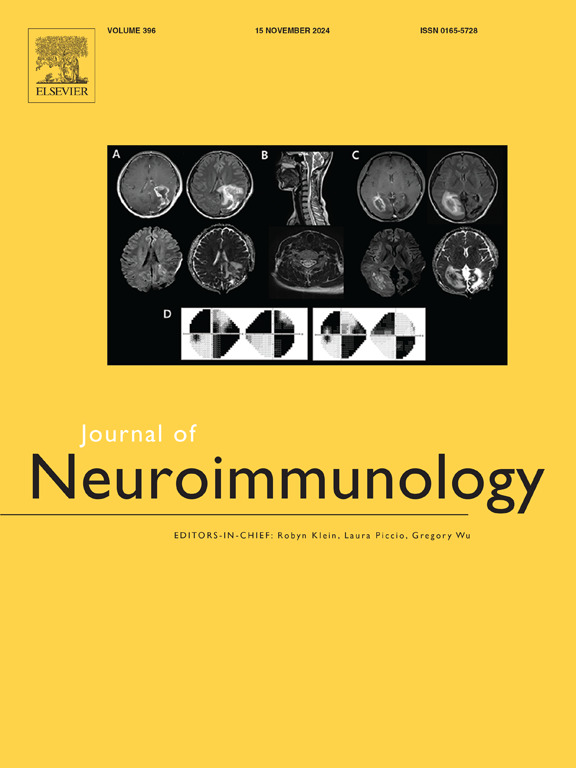Satralizumab treatment in patients with AQP4-IgG–seropositive neuromyelitis optica spectrum disorder after rituximab treatment: A case series
IF 2.9
4区 医学
Q3 IMMUNOLOGY
引用次数: 0
Abstract
Background
The US Food and Drug Administration approved satralizumab for use in adult patients with aquaporin-4 immunoglobulin G–positive (AQP4-IgG+) neuromyelitis optica spectrum disorder (NMOSD) in 2020, but real-world data are limited. The objective of this case series is to describe the experience with satralizumab in adult patients with AQP4-IgG+ NMOSD who previously received rituximab.
Methods
Case information for patients with AQP4-IgG+ NMOSD who had received satralizumab for ≥6 months was obtained from US healthcare providers from April 1, 2022, to September 30, 2023. Patient characteristics, examination findings, diagnostic tests, treatment response and adverse events were recorded. Patients who received satralizumab after discontinuing treatment with rituximab were included in this case series.
Results
Twenty patients were included, and their ages ranged from 19 to 70 years. Overall, 45 % of patients self-identified as Black/African American, 40 % as White, 10 % as Asian and 5 % as multiracial. Time since confirmed NMOSD diagnosis ranged from 4 to 17 years. Median (range) duration of rituximab treatment was 50 (12–162) months. The main reasons for switching to satralizumab were intolerance (60 %) to and inadequate disease control (25 %) with rituximab. The majority of patients (70 %) received satralizumab for ≥24 months and as monotherapy (90 %). All 20 patients were free from radiographically confirmed relapses with satralizumab. Overall, patients maintained disease control with satralizumab, and adverse events primarily included asymptomatic laboratory abnormalities. Two patients permanently discontinued satralizumab due to adverse events.
Conclusions
In this retrospective case series, satralizumab was effective and well tolerated in patients with NMOSD who switched due to ineffectiveness and/or poor tolerability of rituximab. These outcomes align with the long-term efficacy and safety outcomes with satralizumab in the Phase III SAkura clinical trials.
求助全文
约1分钟内获得全文
求助全文
来源期刊

Journal of neuroimmunology
医学-免疫学
CiteScore
6.10
自引率
3.00%
发文量
154
审稿时长
37 days
期刊介绍:
The Journal of Neuroimmunology affords a forum for the publication of works applying immunologic methodology to the furtherance of the neurological sciences. Studies on all branches of the neurosciences, particularly fundamental and applied neurobiology, neurology, neuropathology, neurochemistry, neurovirology, neuroendocrinology, neuromuscular research, neuropharmacology and psychology, which involve either immunologic methodology (e.g. immunocytochemistry) or fundamental immunology (e.g. antibody and lymphocyte assays), are considered for publication.
 求助内容:
求助内容: 应助结果提醒方式:
应助结果提醒方式:


